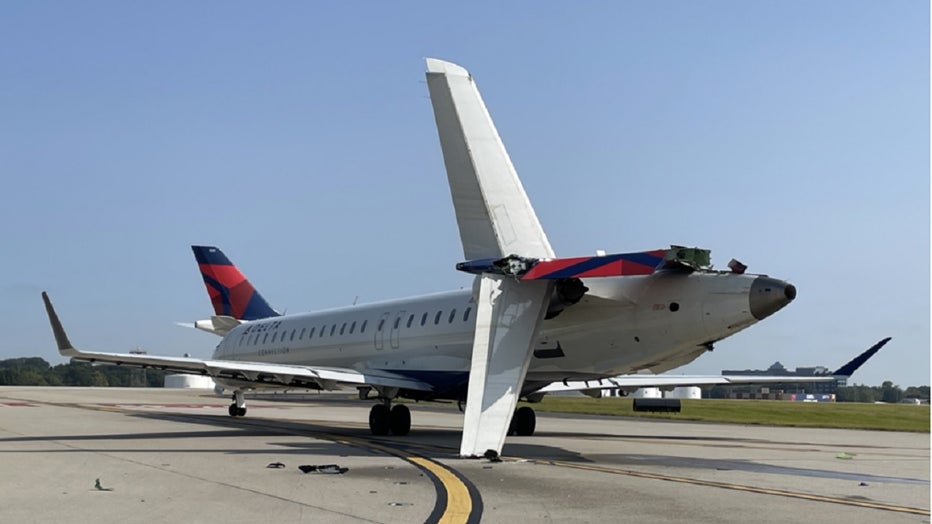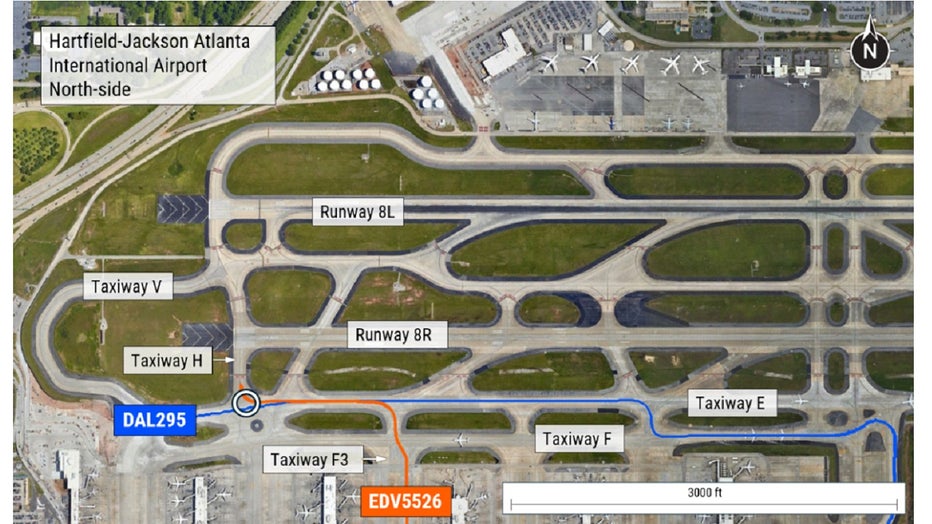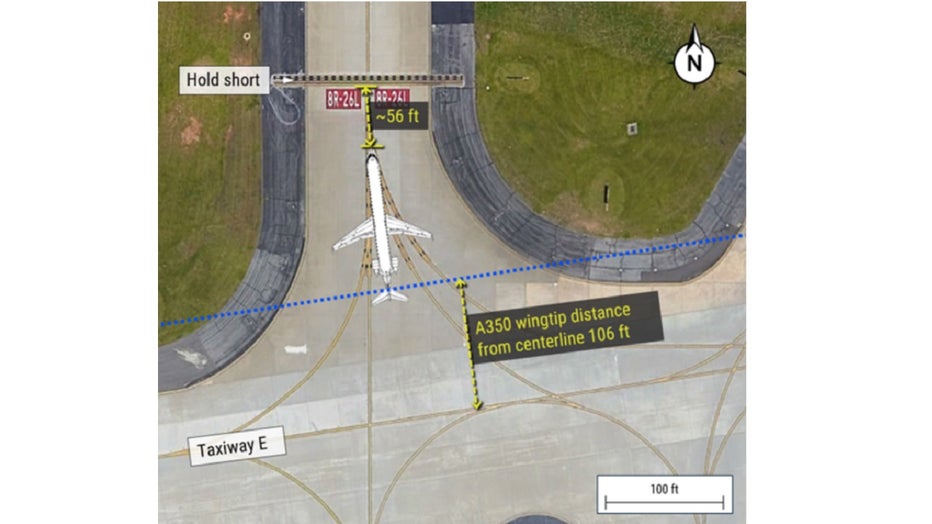NTSB preliminary report on two Delta planes that collided on Atlanta airport's taxiway

Delta Atlanta jet crash preliminary investigation
The NTSB has released a preliminary report detailing what happened during a collision between two planes on the taxiway at Hartsfield-Jackson Atlanta International Airport on Sept. 10.
ATLANTA - The National Transportation Safety Board (NTSB) released its preliminary report in its investigation of a ground collision between two Delta Air Lines planes at Hartsfield-Jackson Atlanta International Airport last month.
The incident occurred on Sept. 10 at approximately 10:07 a.m. as two aircraft, Delta Air Lines flight 295, an Airbus A350-941 (N503DN), and Endeavor Air flight 5526 (operating as Delta), a Mitsubishi CRJ-900 (N302PQ), collided while taxiing for departure.

This photograph shows the CRJ after impact. (Atlanta Airside Operations)
According to the report, the collision occurred when the right wingtip of the A350 struck the vertical stabilizer of the CRJ-900 as both aircraft were maneuvering near runway 8R. The CRJ was holding short of the runway, awaiting takeoff clearance, while the A350 was taxiing behind it. The impact caused substantial damage to the CRJ's empennage and minor damage to the A350.

This image provided by the NTSB shows ground position tracks for DAL295 (A350) and EDV5526 (CRJ) in relation to taxiways E and H. (NTSB)
All 236 passengers and crew members aboard the A350 escaped injury. One flight attendant aboard the CRJ-900 sustained a minor injury, while the other 59 people on board were unharmed.
Delta Air Lines flight 295 was preparing for an international flight to Tokyo Haneda International Airport, while the CRJ was scheduled for a domestic flight to Lafayette Regional Airport in Louisiana.

This image provided by the NTSB shows the distance from the hold short line to the nose landing gear of the CRJ. (NTSB)
The NTSB has assigned investigative teams to assess areas such as operations, airworthiness, air traffic control, and aircraft performance. The flight data recorders (FDR) and cockpit voice recorders (CVR) from both aircraft were retrieved and sent to the NTSB’s Vehicle Recorder Laboratory for analysis.
Completing the full crash report may take up to two years.

